Art Fairs
Long-Lost Painting From the New York World’s Fair Is Now Up for Grabs
The 1939 World Fair's theme was "The World of Tomorrow." The long-lost Rockwell Kent oil painting will be at the Salon Art + Design fair in New York.
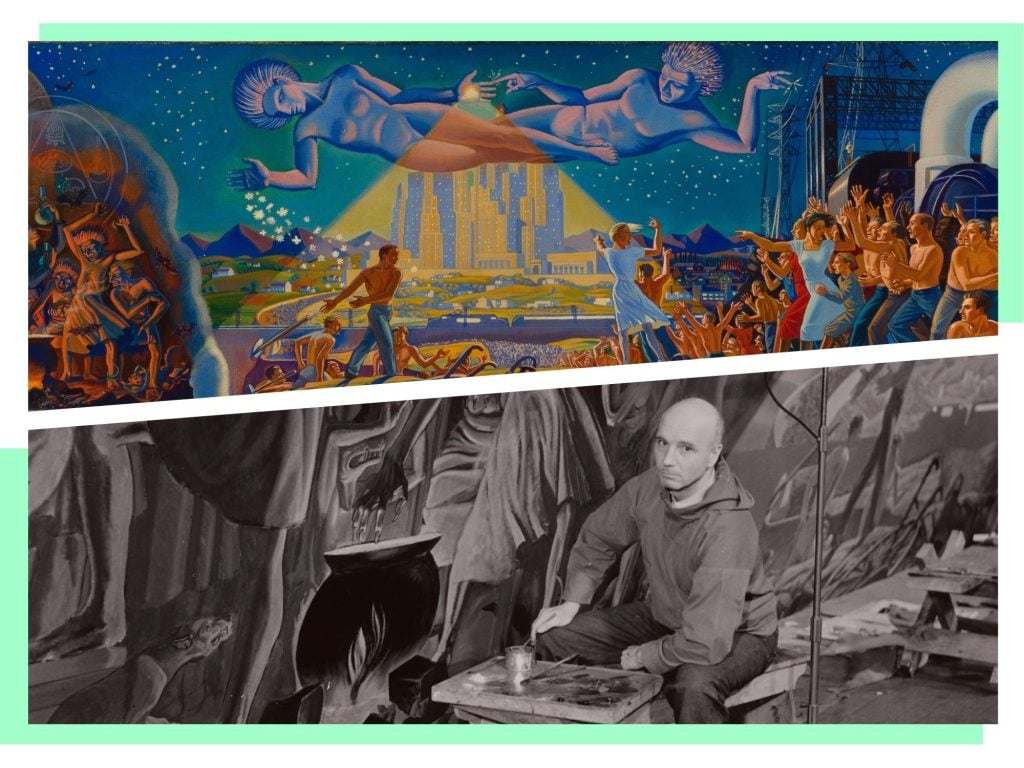
A lost oil painting from the 1939 World’s Fair in New York City is resurfacing at the 13th edition of Salon Art + Design, the collectible design fair at New York’s Park Avenue Armory. The work, by Rockwell Kent (1882–1971), is the only existing version of a monumental mural that the Modernist artist made for the 1939–40 World’s Fair in New York City.
“This painting has almost never been seen,” Bernard Goldberg, of New York’s Bernard Goldberg Fine Art, told me. “It is in absolutely perfect condition. It is just so well-preserved. No retouching, nothing. It’s just the way it was.”
General Electric commissioned the artist to make a 50-foot mural for their pavilion at the exhibition, held at Flushing Meadows–Corona Park in Queens. The piece, titled Power, reflected the overall theme of the fair, which was “the world of tomorrow.”
“Kent did this modern allegory representing the Dark Ages on the left, and the opposite side is the workers surging forward in front of a huge electrical turbine. Through the center of it is the whole city of the future,” Goldberg said. ”It is a tale, really, of man’s progress and development over the ages.”

Rockwell Kent, Power (1939). Photo courtesy of Bernard Goldberg Fine Arts, New York.
The dramatic composition starts with a scene of witchcraft and sorcery, people gathered around a fire pit and cauldron. But aloft in the night sky, above towering city buildings, a pair of naked male and female figures are bringing forth the light of progress, in a celebration of technological advancement and vision of a bright future.
The company also had Kent make this 15-by-50-inch, perfectly to-scale version for publicity purposes, Goldberg explained, as the full-sized one was too big to capture in photographs for the pavilion brochure. Its appearance at Salon Art + Design marks the first time it has been publicly exhibited.
A fire reduced the monumental version to ashes, sadly, in the 1940s, when the warehouse where GE was storing it burned down.
The smaller work came to the dealer thanks to another high-profile discovery, of a pair of Winold Reiss murals from the original restaurant at New York’s Empire State Building.
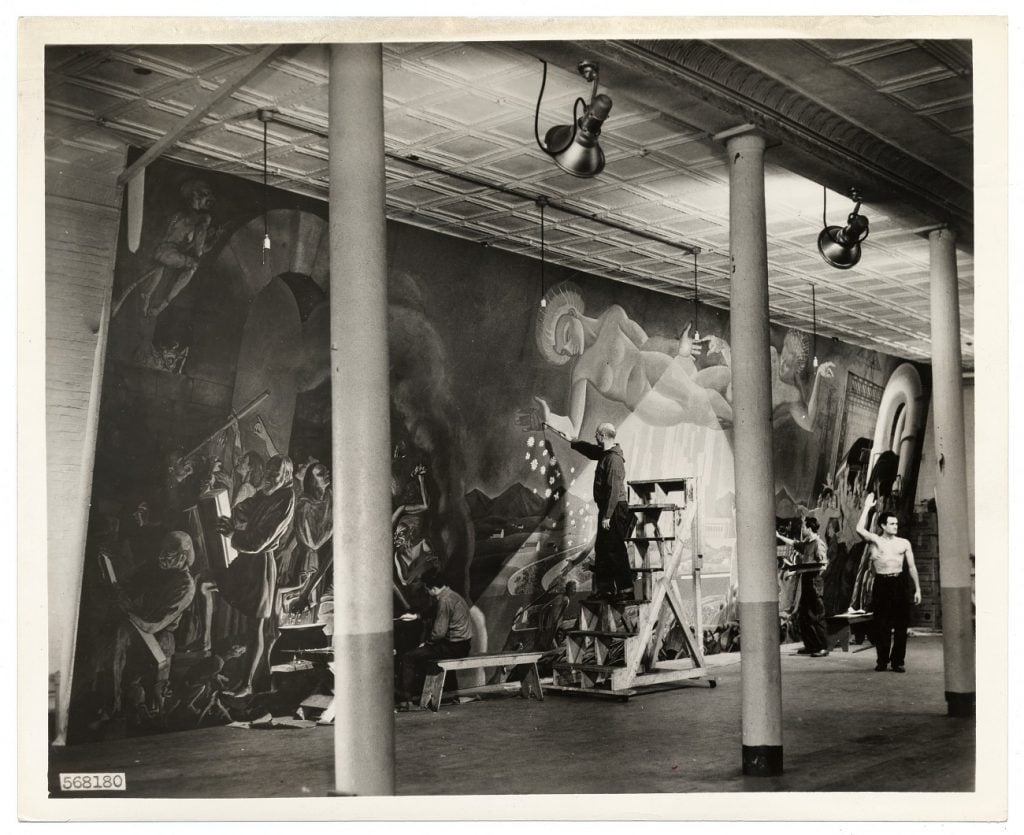
Consuelo Lee photograph of Rockwell Kent working on Power, a mural for the World’s Fair, 1939. Archives of American Art, Smithsonian Institution, Washington, D.C., Rockwell Kent papers.
Because Goldberg offered those paintings at last year’s TEFAF art fair, also at the Park Avenue Armory, the owner of the Kent work thought the dealer might be able to help identify his latest acquisition. The anonymous collector had purchased the painting at a New England auction house, which had identified the artist as a little-known illustrator—but the new owner had a hunch it was by Kent.
To confirm the attribution, Goldberg turned to art historian Scott Ferris, the leading expert on the artist. Thanks to the Archives of American Art at the Smithsonian Institution in Washington, D.C.,
“He said it is absolutely 100 percent Rockwell Kent,” Goldberg said. “He was extremely, extremely excited. Thought it was a tremendous find!”
“What makes the painting so special and unique is that it can be traced directly to the archived correspondence between Rockwell Kent and the General Electric executives,” Scott told me in an email. “Even more important to note is that this painting was not a study, but a smaller version that precisely corresponded with the mural which was installed at the World’s Fair. And that 50-foot mural was destroyed years later.”
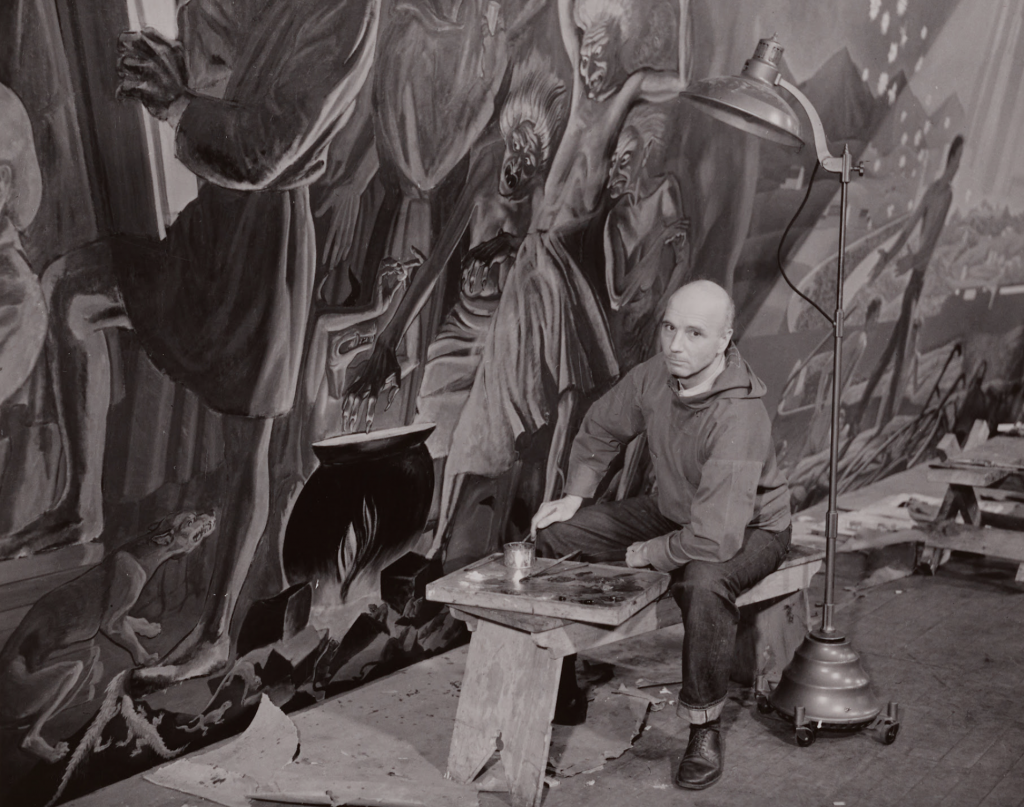
Consuelo Lee photograph of Rockwell Kent working on Power, a mural for the World’s Fair, 1939. Archives of American Art, Smithsonian Institution, Washington, D.C., Rockwell Kent papers.
The gallery is asking $975,000 for the work, which was held at GE’s Schenectady headquarters before passing into private hands under unknown circumstances.
“This is really a very unusual Rockwell Kent, and it deserves that kind of price,” Goldberg said. “This is absolutely more important than anything else he’s done. And of course, it’s very rare.”
If the gallery is able to sell the work at that price, it would be the artist’s most expensive piece ever sold. Kent’s record at auction is $852,500, according to the Artnet Price Database. That result came in at Sotheby’s New York in 2016, for his painting GRAY DAY, a dramatic snowy landscape painted during one of several sojourns in Greenland.
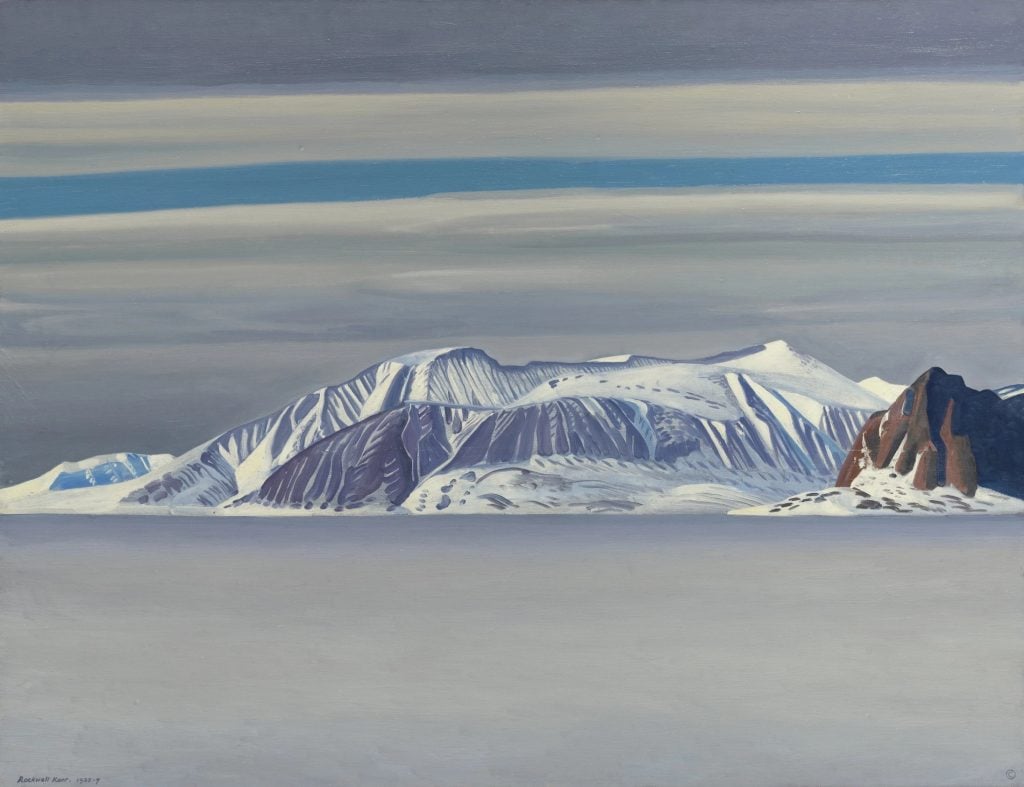
Rockwell Kent, Gray Day (1935–37). Courtesy of Sotheby’s New York.
Ideally, the Goldberg is hoping to attract an institutional buyer, such as the Museum of the City of New York or New York’s Whitney Museum of American Art.
“We always prefer museum buying, so the public can see it. And this is such a historical work, being from the World’s Fair. And it’s just so New York. It’s really a prize for a museum,” he said, noting that he already has interest—from a private collection. “But the size is also perfect for a home. If somebody comes and says ‘we want it,’ I’m going to sell it to them.”
Today, Kent might be a rather obscure figure in art history, perhaps best known for his Moby Dick illustrations. But at the height of his fame, he was so popular that the New Yorker proclaimed in November 1937 that “that day will mark a precedent, which brings no news of Rockwell Kent.”
Ferris included that quote in his catalogue essay for the record-setting Sotheby’s sale, writing rather poetically that “Rockwell Kent was as roughly hewn from the proverbial American maple tree as were his spiritual antecedents Ralph Waldo Emerson, Henry David Thoreau, and Walt Whitman.”
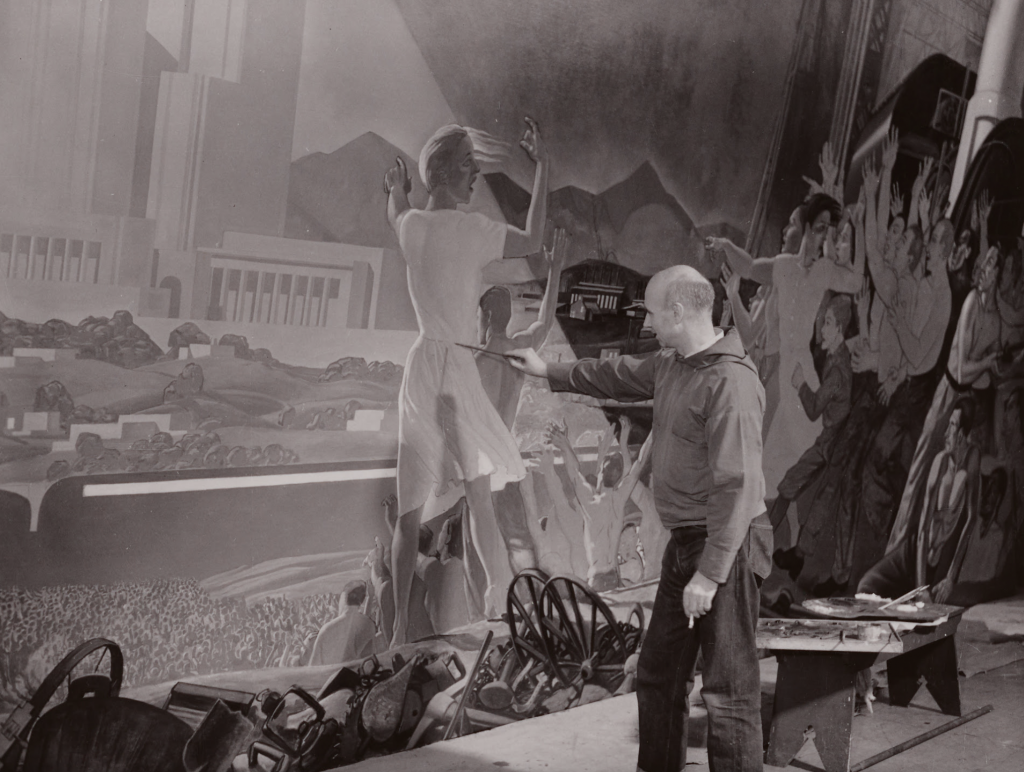
Consuelo Lee photograph of Rockwell Kent working on Power, a mural for the World’s Fair, 1939. Archives of American Art, Smithsonian Institution, Washington, D.C., Rockwell Kent papers.
Kent did his undergraduate in architecture at New York’s Columbia University, and studied painting with William Merritt Chase at Long Island’s Shinnecock Hills Summer School of Art, with Robert Henri at the New York School of Art (now the Parsons School of Design at the New School), and at New York’s Art Students League.
The artist was something of an adventurer, living for a time in such far-flung locales as Vermont, Alaska, Ireland, and Tierra del Fuego off the tip of South America. Inspired by his surroundings, Kent depicted rugged natural landscapes across the world during his voyages, capturing the peace and serenity of the untouched wilderness.
His World’s Fair mural, therefore, stands apart from the rest of Kent’s oeuvre (although he also also made murals for post offices while employed by the WPA).
“In our opinion, this is better than anything else he’s done,” Goldberg said. “His landscapes of Iceland and all that are wonderful, but this is full of action and activity, and the rarity of it—it’s the only thing left of the World’s Fair!”
Salon Art + Design is on view at the Park Avenue Armory, 643 Park Avenue at East 67th Street, New York, New York, November 7–11, 2024.





